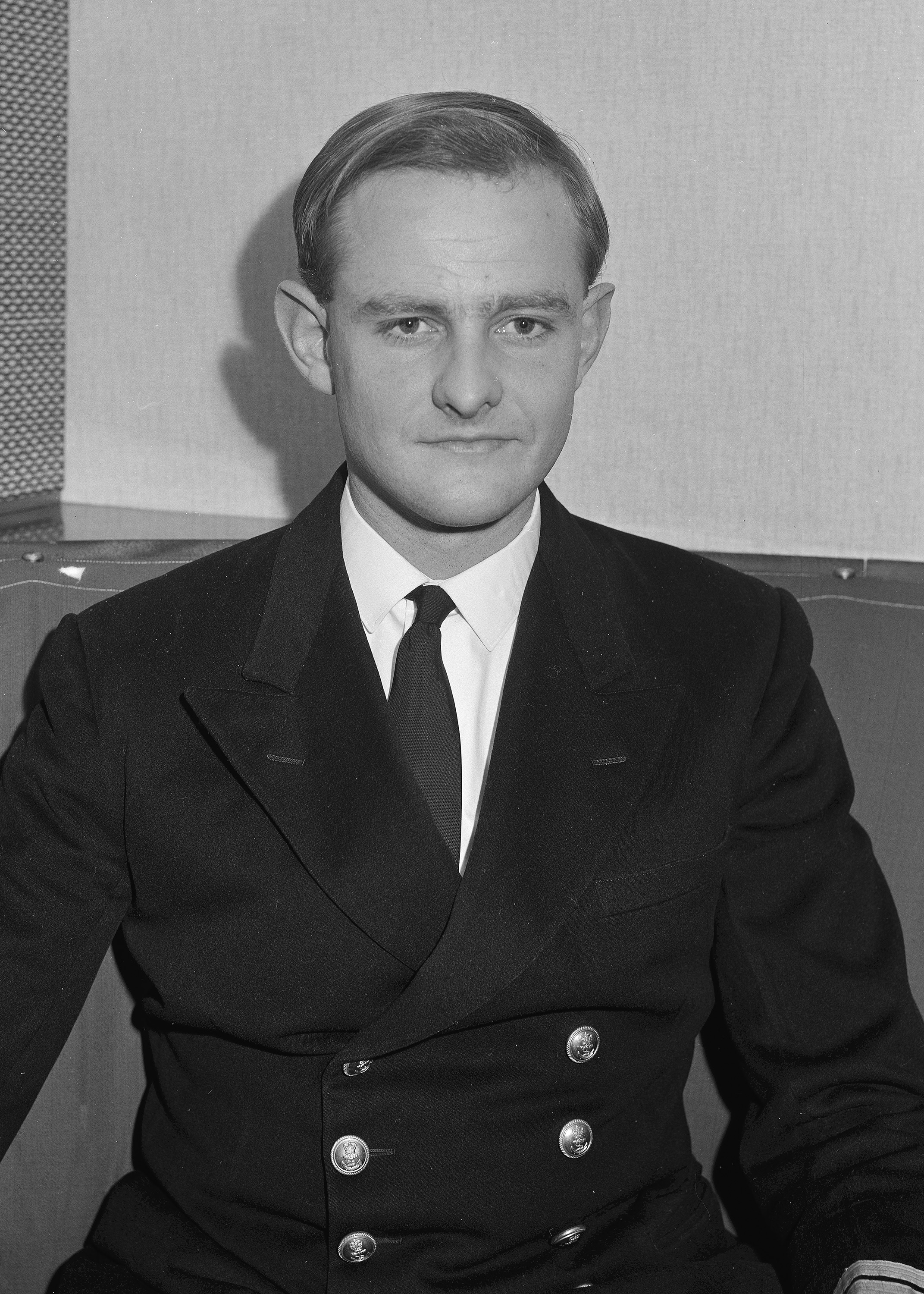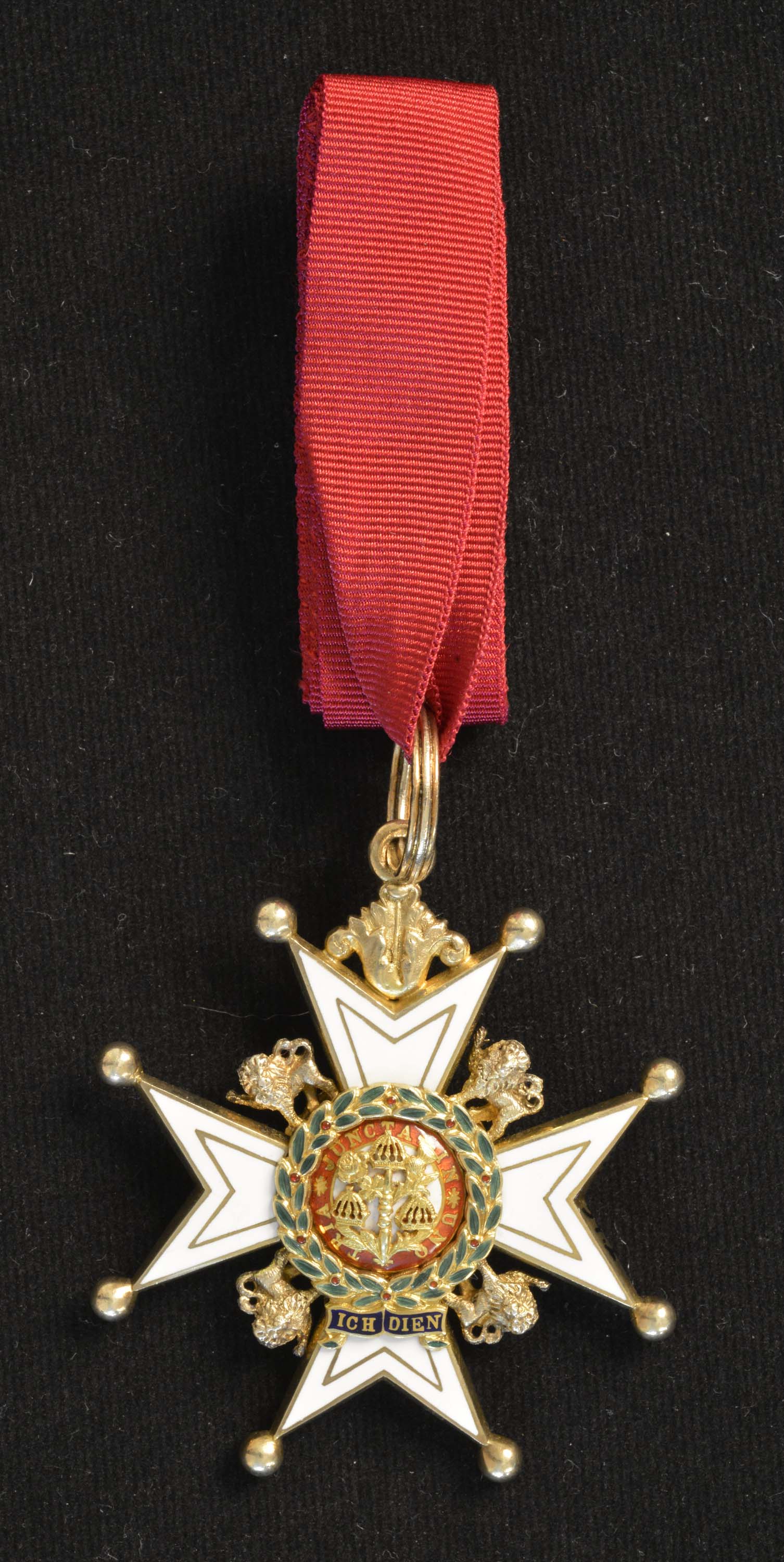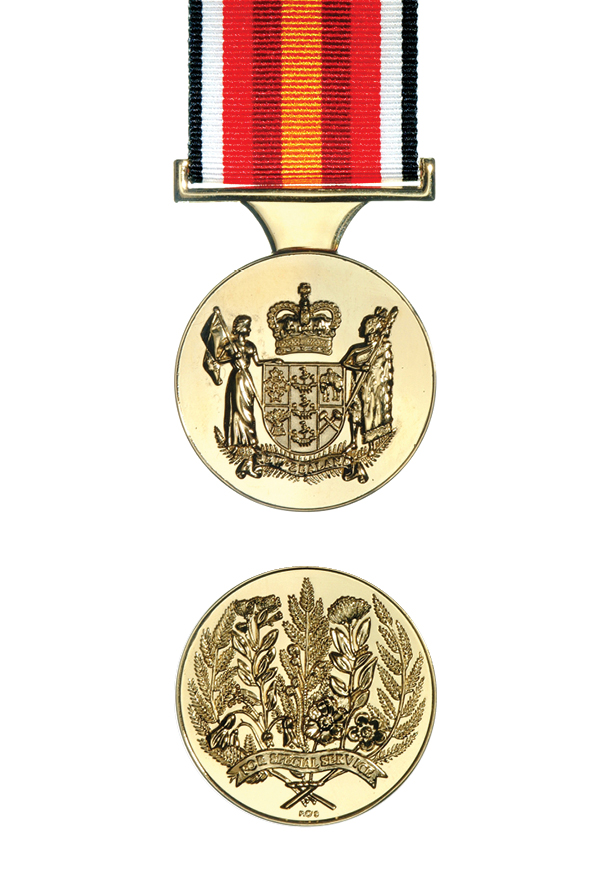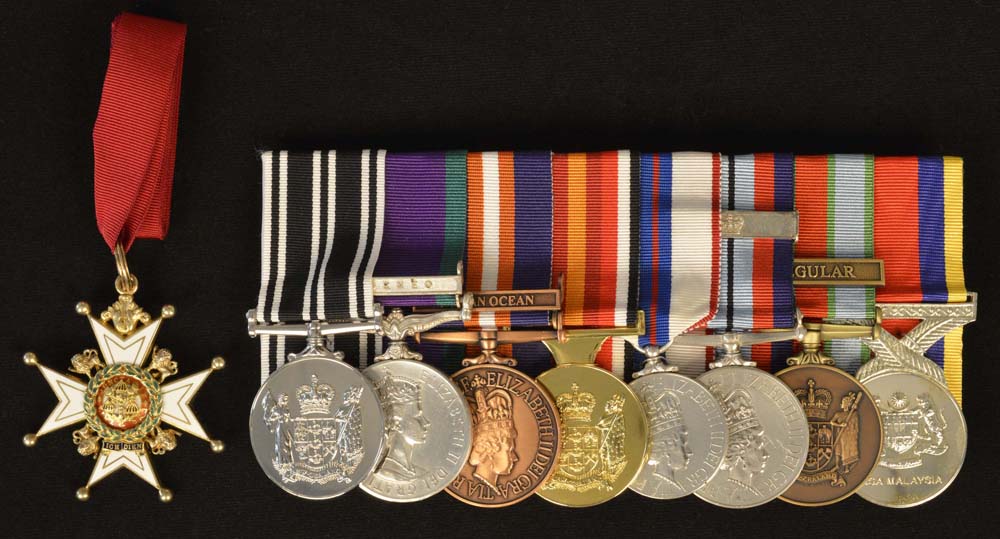

Display No. 17I
WELCH, John Edwin Nugent
John ‘Jack’ Welch joined the RNZN in 1959 as a cadet, training at the Britannia Royal Naval College, Dartmouth. He returned to New Zealand in the newly commissioned frigate HMNZS Taranaki.
He also qualified as a submariner and served in HMS Tapir in 1963, prior to joining HMNZS Pukaki on Operation Deep Freeze working in the Antarctic, and deployments to the Pacific Islands and Australia. He was subsequently appointed Navigation Officer of HMNZS Taranaki and completed a deployment during the Indonesia-Malaysia Confrontation period.
Welch completed specialist training as a gunnery officer at Whale Island, the Royal Navy’s gunnery establishment in Britain. After this he was posted as a Gunnery Officer of the frigates HMNZ Ships Taranaki, Otago, and Blackpool. Following service in Defence Headquarters, Welch was the Gunnery Officer in HMNZS Canterbury during the time the frigate was deployed to Mururoa Atoll during the French nuclear test period.
In 1977, he was promoted to Commander following postings as Commanding Officer of HMNZS Inverell and Fleet Operations Officer. He served as the Commanding Officer of HMNZS Otago in 1978, and HMNZS Canterbury in 1983 with a period at Defence Headquarters, Wellington in between. His time in Canterbury included a deployment to the Indian Ocean, in support of the Armilla Patrol. In 1984, he was re-appointed Fleet Operations Officer, and was responsible for co-ordination of the salvage of the Rainbow Warrior from Auckland harbour in 1985.
In 1987, Welch was posted as the Defence Attaché in Ottawa, Canada. On his return to New Zealand he was promoted to Commodore and employed on special duties associated with preparing the 1991 Defence White paper. In 1994 he was promoted to Rear Admiral and appointed as Chief of Naval Staff. He remained in this appointment until his retirement in 1997.
Awarded medal(s)
Medal Description [Left to Right]:
Companion of the Most Honourable Order of the Bath (CB)

British order of chivalry with three classes of members: Knight and Dame Grand Cross (GCB), Knight and Dame Commander (KCB and DCB) and Companion (CB). It was awarded to military personnel during both World Wars. Recipients of the order are usually senior military officers or senior civil servants. The ribbon is crimson red.
The New Zealand Operational Service Medal

The New Zealand Operational Service Medal (NZOSM) was instituted in 2002 to recognise New Zealanders (military and civilians) who have served since the end of the Second World War. The NZOSM provides recognition for those who have earned a campaign medal or completed 7 days or more of operational service since 3 September 1945. It is awarded once only to an individual, regardless of how many times he or she has deployed on operations. The medal features the New Zealand Coat of Arms on the obverse and a kiwi on the reverse. The ribbon is black and white stripes, representative of New Zealand’s national colours.
The General Service Medal 1962

The General Service Medal 1962 was instituted in 1964 (replacing both the Naval General Service Medal 1915-1962 and General Service Medal 1918-1962) to recognise service in minor operations for which no separate medal was intended. This medal was always awarded with a clasp for the specific area of operation. A total of 14 clasps have been issued but only two have been awarded to New Zealanders in significant numbers. These are the ‘Borneo’ and ‘Malaya Peninsula’ clasps awarded for service related to the Indonesian Confrontation of the 1960s.
New Zealand General Service Medal 1992 (Non-Warlike)

The New Zealand General Service Medal 1992 was instituted to recognise service in non-warlike operations for which no separate New Zealand, British Commonwealth, United Nations or NATO campaign medal was issued. Thirteen clasps have been issued for non-warlike (peacekeeping) operations since 1954. In 2002 it was replaced by the New Zealand General Service Medal, 2002. The design and colours of the ribbon are based upon the New Zealand Medal 1845-47 and 1860-66.
New Zealand Special Service Medal (Nuclear Testing)

The New Zealand Special Service Medal (Nuclear Testing) was awarded to personnel who were part of an official New Zealand Government presence at atmospheric nuclear tests between 1956 and 1973. This includes naval personnel who served in HMNZ Ships Pukaki and Rotoiti at Operation Grapple (British nuclear weapon tests in the Pacific), in 1957-58, as well as those aboard RNZN vessels sent to protest French nuclear tests at Mururoa Atoll in July 1973. The medal is gilt. The obverse of the medal features a representation of the New Zealand Coat of Arms. The reverse features a representation of a bouquet of New Zealand flora, composed of fern fronds and sprigs of blossom of pohutukawa, manuka, kowhai and Mt Cook lilies with a scroll inscribed “For Special Service”. The ribbon is 32mm in width with an orange-yellow central stripe with Crimson, red, white and black stripes. The central stripe of the ribbon represents the core of the nuclear explosion fireball and stripes either side allude to the red luminous spherical wave formation radiating from it. The black represents the destruction caused by the explosion.
Jubilee Medal 1977
A commemorative medal created in 1977 to mark the 25th anniversary of Queen Elizabeth’s accession to the throne in the United Kingdom, Canada, Australia and New Zealand.
New Zealand Armed Forces Award

A long service decoration for Regular Force Officers of the New Zealand Defence Force. Established in 1985, it was originally presented for 15 years of unblemished service. In August 2020 the criteria was modified to be awarded for 14 years service. The medal ribbon colours of dark blue, crimson and light blue represent the three Services (Navy, Army and Air Force) with a black central stripe symbolising New Zealand. The ribbon of the award was designed by Mr Phillip O’Shea, New Zealand Herald of Arms Extraordinary.
New Zealand Defence Service Medal

The New Zealand Defence Service Medal (NZDSM) was instituted in April 2011 to recognise military service since the end of the Second World War. One or more of four clasps can be awarded with the medal determined by military service undertaken: Regular, Territorial, C.M.T. (Compulsory Military Training) and National Service.
Eligibility is three years of service in either the Regular or Territorial (Reserve) Forces of the New Zealand Defence Force (Navy, Army, Airforce), or those who undertook Compulsory Military Training (under the Military Training Act 1949) or National Service (under the National Military Service Act 1962).
The medal itself has the New Zealand fern frond and the badge of the New Zealand Defence Force which combines the emblems of the (Navy, Army and Air Force). The ribbon colours also represent the three services: Navy (dark blue), Army (red) and Air Force (light blue).
Pingat Jasa Malaysia Medal

This Malaysian medal was instituted by the King of Malaysia for award to British Commonwealth personnel who served during the Malayan Emergency and the Confrontation, 1948-60. The ribbon has five vertical stripes in the colours of the Malaysian national flag.

